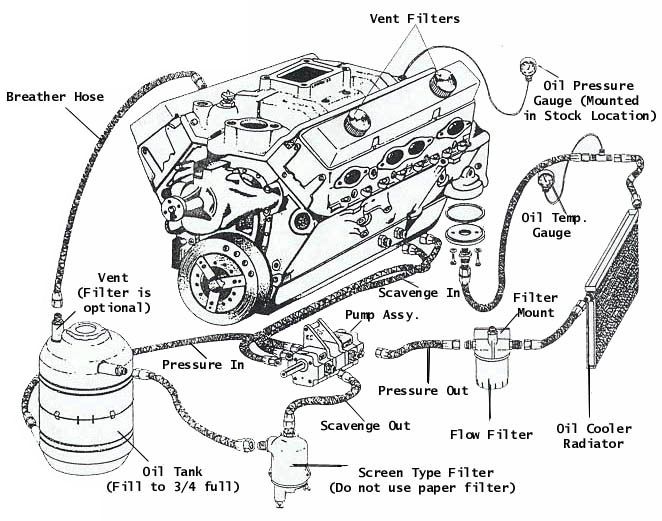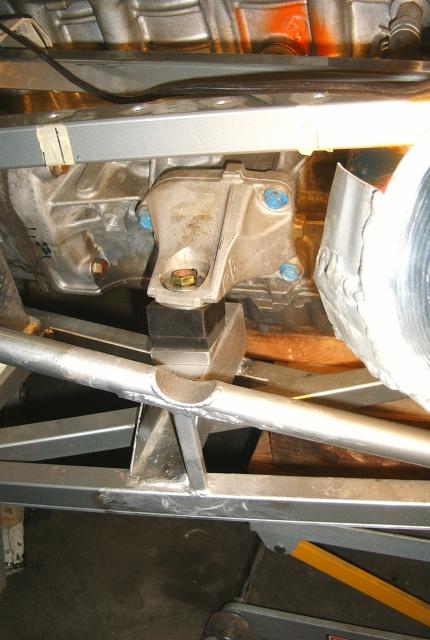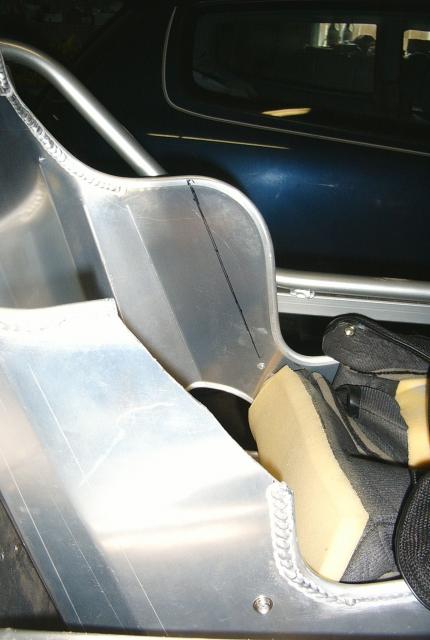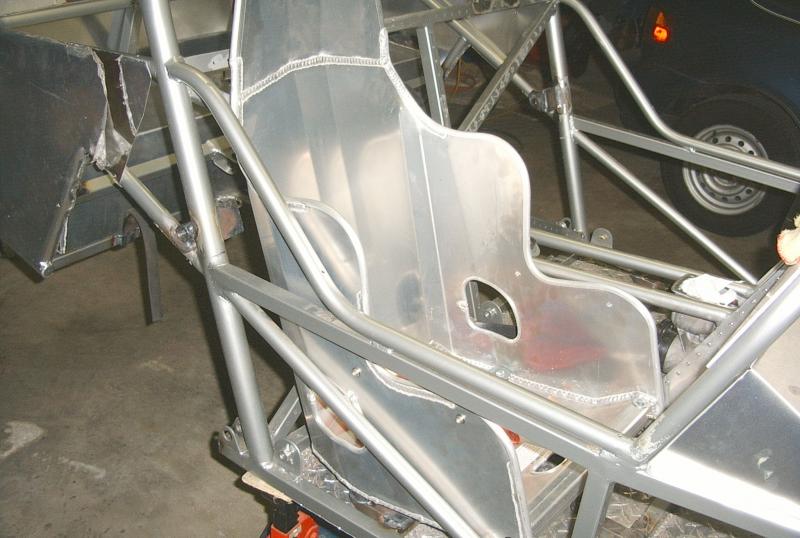-
Posts
426 -
Joined
Content Type
Profiles
Forums
Store
Articles
Gallery
Events
Library
Everything posted by JohnK
-
MIT's at it again. Check out the first video http://www.physorg.com/news203687876.html - and then think about the simulator at http://www.physorg.com/news201149109.html
-
The idea here is that, beyond the thrill of spending some time in a simulator, the behaviour of the car has been modeled mathematically, and rendered in software to generate the movements of the model. The model specifies the movements that the robot will perform when the human operates the controls. That means that, if you build and connect all the pieces of the model correctly, you can then deliver specs which you can use to construct a car whose behaviour will be that specified by the model. A simpler example: Chrysler developed a system that can specify an entire car in 3D - every nut and bolt and dimension. Once they got the system correct, they turned the developers/designers loose on it and came up with a complete spec for the what would be sold as the Viper. They were able to produce the car in an incredibly short period of time since the model defined all the pieces. They just handed the files to the engineers and said "Please build this." Closer to home and even simpler, I designed a complete brake system for my Se7en, from scratch, that would fit my Fiero spindles and allow me to run 13" wheels. After I did the work of calculating the dimensions, mechanical advantages, weight transfer and coefficient of frictions needed to make the brakes work as they're supposed to, I used a CAD package to specify the rotors, calipers, hats, mounting brackets and wheels. The CAD package allowed me not only to specify the dimensions of each part, but to create the entire assembly as it would exist on the chassis, i.e. to show clearance and interference. Using the drawings/specs from the CAD package, I ordered the parts from 4 different suppliers and when everything showed up, they all bolted together perfectly. Without the CAD package, it would have taken forever to get the same result and cost much much more.
-
Check out this one, but I suspect it's a bit more expensive. http://www.physorg.com/news201149109.html
-

Dry Sumping... (I know its punny.. oh ha!)
JohnK replied to beagley's topic in General Sevens Discussion
OK, how about HEAT? I.e., getting rid of it. A wet sump gives you a big finned surface stuck in the air stream so it can shed heat under the car - unfortunately at the expense of ground clearance and power losses and ... When you put a dry sump in, you have all that hot oil now contained within chassis space, which there isn't a whole lot of in a Se7en. Standard equipment in a dry sump system is an oil cooler, which also has to be located somewhere, preferably not where it adds heat to something else like the engine's cooling system. Supercharging adds more power at the expense of more heat output, and thus more cooling problems. Little by little the guys who design successful race cars begin to appear pretty damn clever! My favorite is C. Chapman putting the radiators on either side of the chassis. So... what are the different solutions for locating all the parts and keeping everything cool enough to work correctly? -

What kinds of workshops do you all inhabit?
JohnK replied to beagley's topic in General Sevens Discussion
2 1/2 car, unheated, 22 ft deep, 9 ft to joists, block wall, good/smooth cement floor, attic storage space. Before kit came I put in shelving on every wall I could along with 3 x 4 chest level work tables at left and right walls at the windows. 5 strong 2 ft deep x 8 ft shelves on back wall have been very useful. Whole-house exhaust fan in attic draws out welding or exhaust fumes. One side is for grinding (belt sander, vice, grinder, ...) other is for clean work (TIG, fabrication/layout, assembly,...), but fiberglass and aluminum work on car makes dirty/clean sides kind of moot. House has lathe, bandsaw, drillpress, ... so there's usually traffic between house and garage. Honda Civic occupies one space normally. Major effort is staging work and keeping parts organized. -

Dry Sumping... (I know its punny.. oh ha!)
JohnK replied to beagley's topic in General Sevens Discussion
A suggestion here, with 20/20 hindsight. I gathered info for years and even spent time working in two different shops to gain experience in se7ens and performance development. When I finally took the plunge I couldn't believe how many "Oh, S***" situations I ran into, in spite of all my planning and experience. What I thought would take me no more than a year is going on 6 years. Now I have had a great time, but had no idea how much work it would take to turn a "kit" into something I could have some faith in. A rational person looking over my shoulder could well have suggested that I just push the thing over a cliff and buy an ordinary Caterham - and such advice probably wouldn't have been bad. -

Dry Sumping... (I know its punny.. oh ha!)
JohnK replied to beagley's topic in General Sevens Discussion
7evin, What are you running off the crank on the LEFT side of the engine? Power Steering? -

Dry Sumping... (I know its punny.. oh ha!)
JohnK replied to beagley's topic in General Sevens Discussion
check out http://www.speedracersportscars.com.au/PRBS2K.htm; for a schematic, here's a sketch of a typical setup. My take on this is that parasitic losses from rotating parts slinging oil is considerable. Also, the scavenging can lower pressure in the crankcase considerably, which makes less work for the pistons going down and is partly responsible for the increased engine power output. Pumps are sold stacked so you can add stages. It's common to scavenge the head(s) as well as each crank throw bay (read Porsche, Ferrari engine specs). Lower engine mounting: lowering the center of gravity yields the greatest improvement in handling. The PBR project illustrates what you can do. 7evin's setup is very cool. I'm taking notes and saving my money! -
Oops, sorry. I'll have to do a search beforehand in the future.
-
Those of you out there who like to build things (i.e. solve problems) and who know something about the problems of control should enjoy this, particularly the second video. http://www.physorg.com/news198481187.html
-
I really expected cries of "Big Brother" and government intrusion. Where did all you guys with practical and rational responses come from? Maybe Intel should have included some features to record long-term climate data to stir up some emotion.
-
I'm all for building new cool things, but who was it that said "There are some things that man should not tamper with." ? -- Intel revealed their aircraft-style black box last week at their research showcase in Santa Clara, California. The device can send video footage of driver's behavior during an accident to the police and insurance company. http://www.physorg.com/news197564478.html
-
When I was looking for a rack for my car (to get rid of bump steer) I ran into an outfit that sells quality R&Ps mostly to circle track racers, but also makes some lighter units suitable for sports cars (MC, MRC and MR). Their on-line catalog is the best and clearest source of information on steering that I've ever seen. The logic offered was that very quick steering is really valuable in that it allows you to toss you car around. But the cost is that steering effort goes up as a result, and it's hard to apply steering finesse when you have to exert a lot of force. There are things you can do to lessen the force required, like reducing caster, ... but it involves a lot of on-going setup work. With power assisted steering powered by a power steering pump designed for racing, all the problems go away. I bought into that logic and installed one of their units (MR) in my car and fitted the P/S pump they researched and recommended (KRC). Found out subsequently that Mosler and Saleen use the same unit in their race cars. I have no ties of any kind with the mfg involved, which is Woodward Precision Power Steering (woodwardsteering.com). The stuff they sell is amazingly well-designed and well-manufactured. The owner must be one hellofa mechanical engineer.
-
Sounds great! How about a source.
-
A technical note here on Ford engine management systems: I know from first-hand experience that the 2000 model year Zetec, and I thus assume all subsequent Zetec and Duratec motors, use a returnless system for fuel supply. Earlier Ford setups had a pressure regulator on the fuel rail that bled anything over ?? psi through a second line back to the tank. The returnless systems had only a feed line from the tank. To manage fuel they use a separate module that is somewhere in the neighborhood of the fuel tank on a Focus - i.e., not part of the in-tank fuel pump in the 2000 Focus ZX3 I dissected. I don't remember if there are specific sensors on the engine that are involved in this control or if the fuel control module does all its calculations through direction of the ECU which knows what the fuel requirements are by what the engine's doing at any moment. It would be good to be cautious here as this is not a trivial control problem - I would expect any liberties taken with such a system to have significant (and very difficult to fix) consequences. Honda, for all its incredible engineering, chose to use a return-type fuel deliver system on the 2004 S2000 engine I have
-
The second set of headers I got with my kit didn't rest directly against the oil filter like the first set, but one pipe did rest soundly against the chassis. A mechanical engineer friend suggested the fix shown: sound without requiring a complicated fabrication (of course he wasn't the one to have to sit inside the chassis and do the welding). The vertical beneath the cutout is to prevent buckle.
-
Find a Caspar Milquetoast sub-compact and a large parking lot. You want something that's gonna allow her to make mistakes without feeling that the world's gonna end when she messes up. I taught several girls to ride motorcycles, which has got to be harder than learning to drive a car with a M/T. Best solution was an old Suzuki 125 street-legal trail bike and a field out in the country. I did have a problem getting the bike back, though. Best of luck.
-

Newbie with thousands of questions: Seat recommendations
JohnK replied to Ruadhd2's topic in General Sevens Discussion
Re UltraShield seats: Their 2010 Pro Drag Seats came with my WCM Ultralite S2K. They can be gotten in 14, 15, ...18" inch widths at http://www.ultrashieldrace.com/prod.php?id=15. They're made of 5056 aluminum, which I found the hard way is pretty stout, having had to bend the wings in as per their directions in order to try to get the seat to fit me. What I ended up doing was trimming the wings ( and cutting and re-sewing the covers ) in order to make them something I could live with - the upper wings were perfectly in line with my elbows when steering straight-line (awkward) and interfered when I tried to steer (painful). The trimming I did didn't sacrifice the rigidity or supportiveness of the seat. The padding is next to non-existent (recall Team Iron Butt), so I wandered by Sunshine Foam here in Cincinnati and got a sheet of "Rebond" and put 2" across the flat at the bottom and 1" at the small of my back and that should be OK. the Rebond is especially good for automotive/motorcycle applications. Good luck with your restore. -
Stanford, again. As if driving through the desert itself, their VW can now, not only parallel park, but can do it with attitude. http://www.physorg.com/news192784548.html
-
Watch your voltage - in their docs they specify that it should never be over 15. I found that an ordinary Schauer 6 Amp charger set on "conventional" fills this bill.
-
Good practice. Also recommended is LPS 3. The aircraft people use it, so it must be worthwhile
-

Ohio builders registering inspection ?'s
JohnK replied to paulmpetrun's topic in General Sevens Discussion
Call your uncle's local Ohio State Patrol and ask for the number its inspection station. Having had a rough time of it with my "kit", I've checked out the process beforehand (as thing are, I don't expect to show up at the State Patrol garage with an inspect-able vehicle till later in the year). I've talked in person with the people who do the work and we've gone through my paperwork and found no problems. Basically they want to ensure that "an owner assembled vehicle" is made from parts that were bought and paid for legally. "We are NOT a Safety Lane", was one thing I was told. The only thing that caused some concern were the bills of sale - the builder was, shall we say, "a bit casual" about saying that I'd paid for the big pieces. I finally hassled him/builder enough to get reasonably documented and authorized receipts and the chief inspector was fine with it all. He also said that, when I was ready, be sure to allow myself some lead time - depending on the season, they can get a few weeks behind. In this area there used to be EPA inspections, but that's disappeared due to the difficulties in ensuring fairness between the different affected locales' emission generation. Several years ago the State Patrol said that, after their inspection, they'd send me to the EPA, but this time there was no mention (and my local EPA inspection site is closed. Hope this helps. PS - I got a letter from OSP HQ OK'ing polycarbonate Brooklands screens. -
I keep seeing this as an opportunity seized by people who want to holler at whoever they feel like for whatever reasons they may have. Global Warming is the thing that's being recorded, and the RESULT of the Earth becoming warmer is predicted to be significant "Climate Change". The fact that the Earth is warmer doesn't mean my particular back yard is necessarily going to see particularly less snow when I happen look out the window. And anyway, a snowfall in my back yard that I observe isn't my climate, it's my WEATHER. However, if my back yard happens to have a 60 mile long glacier in it, and I observe that glacier disappear by melting over 10 or 20 years, that is very likely due to a change in the climate of my back yard. It seems to be a universal habit that people feel free to criticize experts in a field that is very complex and that they have no significant expertise in (with apologies to any previous commentators who happen to be senior climate modelers at NOAA). Alternatively, there is the precedent set by our economic system. A number of years ago a senior and highly respected scientist at NASA (Hansen?) posed a question to his fellows: "Is it possible that all the (industrial) human activity is putting enough matter into the atmosphere to affect the climate?" Energy companies, behaving like good capitalists, saw any answer to this kind of question as a threat to their profitability and began a serious disinformation campaign against any research which addressed this question, merrily handing out firebrands and pitchforks to the rabble they roused (or loyal employees of their companies). If I remember correctly, Congress got these companies to stop running "deceptive advertising" in this regard.
-
Jerry, that is really really funny. Thanks.





